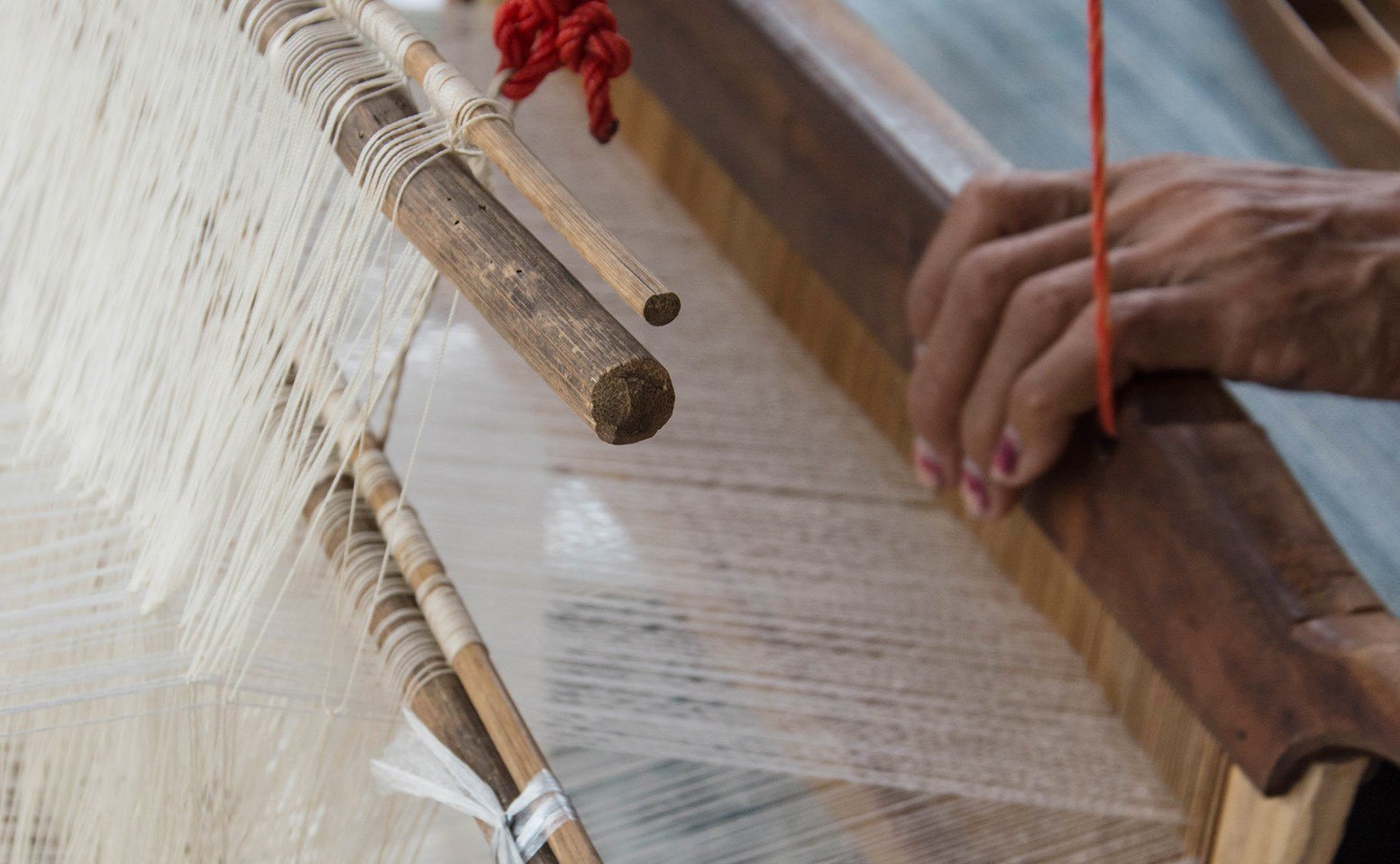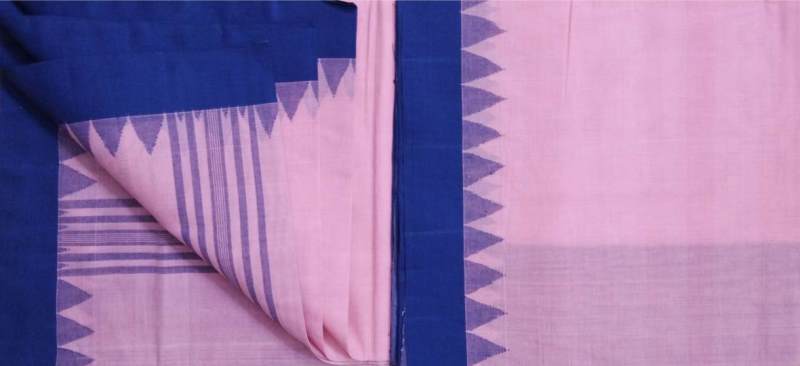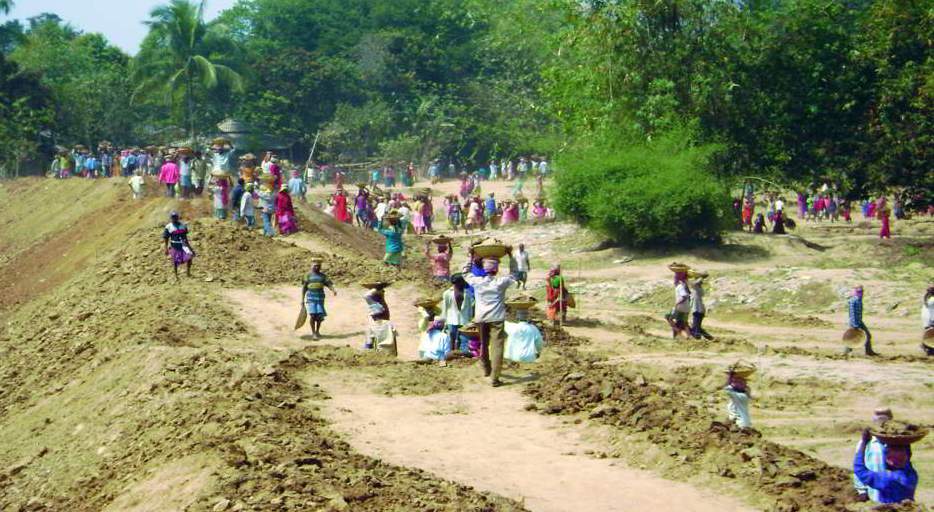
The handloom and Khadi sectors are vital to the sustainable growth of India’s villages because they provide employment to lakhs of households. Environmentally sustainable and based on India’s artisanal potential- the industry deserves greater public attention.
Bharat Dogra is a senior journalist who has been involved with several social movements and initiatives in India.

There has been widespread debate in the nation about employment generation in recent times but the question of technology choices has not received adequate attention. We need to assert two neglected viewpoints: the first is that in India, a policy of indiscriminate mechanization is not proper and secondly it is very important to protect the special and intricate craft and artisan skills that exist with millions of persons and households in India.
In fact, there is a strong case not just for protecting these skills but even for reviving some of these skills. One reason for this is that some occupations are inter-related and if due to neglect one skill is on the verge of being lost, and then several other related jobs may also be threatened.
In the context of the most important consumer goods industry of textiles, this means giving a special place of care and protection to khadi and handlooms. In recent years, most reports about handloom weavers have spoken of decline and decay, debts and distress. Yet it is possible to envisage steps and solutions which can not only protect lakhs of skilled livelihoods in handlooms and khadi, in addition it should be possible to create lakhs of new livelihoods, both full-time and part-time in this sector.
The national significance attached to Khadi
Handloom cloth is the cloth woven by hand, or cloth woven on manually operated looms (as distinct from electricity operated looms or power-looms). Khadi is a type of cloth which is on the one hand, hand-woven (handloom) and in addition, the yarn for weaving this cloth is also obtained by hand-spinning (for example on charkha or manually operated spinning wheel).
Thus khadi is hand-woven plus hand-spun cloth. Khadi has a very special significance in India, as it was during the freedom movement that Mahatma Gandhi gave great importance to Khadi as a symbol of India’s liberation. The handloom industry had suffered a blow and the weavers had been ruined by the unjust promotion of British mill-made cloth by colonial rulers.
According to official data given by the Development Commissioner (handlooms) of the Government of India, the handloom sector was next to agriculture in providing employment to about 6.5 million persons. However during the last decade, there have been widespread reports of distress suffered by handloom weavers and many of them were forced to leave their traditional livelihoods.

One reason is the lack of sincerity in several efforts to help the actual handloom weavers and spinners, as opposed to those who control the trade. In fact, there are several examples of how non-implementation of existing protective provisions led to large-scale loss of livelihoods.
An expert on handlooms L. C. Jain estimated (in 1983) that during the previous decade 5.5 million handloom workers were rendered unemployed or their employment had been reduced due to the displacement of 1386 thousand handlooms (each handloom providing part or full employment to 4 person) by 231 thousand power-looms (each power-loom displaced six handlooms).
Similarly, the massive loss of employment was seen in related areas such as the hand-printing industry. According to L. C. Jain, because machines were employed for 942 million meters of clothes over and above the 500 million meters at which their output would have been frozen, as recommended by the Research Advisory Panel (textile printing industry) an estimated 2, 50,000 jobs opportunities have been lost in the economy.
The actual employment available in handloom and khadi sectors today is much less than the potential. On the one hand, lakhs of existing livelihoods can still be saved. On the other hand, lakhs of livelihoods can also be added if the causes which caused distress to weavers can be removed, as they still have their skills and can return to this form of livelihood based on their traditional skills if given the opportunities.
If the outlook for handloom and khadi is good, many artisans will also feel encouraged to teach family skills to the next generation. Hence this livelihood will continue to be nurtured.
The unrealistic versus realistic debate
For many people who like to discourage such efforts; this is unrealistic as the inevitable march of mechanization is bound to reduce the prospects for handloom and khadi. However, in an expanding market of cloth production, higher production by the mechanized sector can co-exist with higher production by khadi and handlooms if the potential of the later is allowed to be properly realized. What is important to emphasize is that handloom and khadi have some inherent strengths and some types of cloth are best woven only on handlooms.
In a review of the inherent strengths of handlooms, B.K. Sinha (former Development Commissioner, Handlooms) pointed out that due to manual operations; several combinations are possible in handlooms with intricate designs. The review asserts the fact that: “The functional properties like drape, texture, strength, wrinkle resistance, dominant stability etc. can be ingeniously manipulated through appropriate designs, exclusive types of fabrics used, counts and twists of warps and yarns, thick density, type of weave, type of fashion and process employed in printing.” This review goes on to detail many kinds of clothes which are best woven on handlooms-
the clothes made from extremely fine material i.e. yarn count with 100s and above which are delicate, can be woven more safely on the handloom owing to comparative lightness of jerks. The polish of the clothes interwoven with gold or silver thread can be taken out by extremely frictional action of power looms. On the contrary, handlooms are ideally suited for such work. Clothes with multi coloured designs in which the weft is to be changed very frequently are most suited to handlooms. Clothes with embellishment in the border and heading and entire body with delicate designs in various colors which calls for individual schemes can be ideally woven on handlooms.
Khadi: the ecologically and economically viable choice
Many people, who have been using khadi cloth for several years, say emphatically it is very healthy for the skin, providing comfort in summer as well as in winter. With growing health consciousness, this can help to increase the demand for khadi in India as well as abroad. Also the undisputed fact that handloom and even more so khadi generates the most employment per meter of cloth can also be used to promote this cloth.The consciousness for energy-conservation as well as reducing greenhouse gas emissions are increasing. From this point of view hand-woven cloth has an obvious edge, particularly when it is also hand-spun.
The eco-worth of these products can be increased further by the increasing use of vegetable colors.Massive amounts of money are spent on imparting vocational education, including industrial skills in an institutional set-up. But in the informal set-up of handlooms and several related crafts and artisan skills, an informal structure exists for imparting invaluable and intricate skills to the next generation without the government spending any money. Surely such traditional sustainable livelihoods based on beautiful skills need to be protected and promoted in a big way. Probably due to the impact of the Gandhian legacy inherited from the time of the freedom movement, after independence the government set in place a series of measures for the protection and promotion of handlooms and khadi but these were not implemented in the right spirit.
Mobilization and organization of weavers and related artisans can play a big role in creating conducive conditions for better implementation of protective laws and promotional schemes.
While protecting handloom weavers is important, the cause of hand-spinning is no less important. Somehow the schemes of handloom promotion have got delinked from hand-spinning, although Gandhi had emphasized that without hand-spinning as a base, handloom weavers will never be able to ensure self-reliant, sustainable development. They will remain dependent on mills for yarn, on suppliers who actually want the rapid development of mechanized weaving (apart from spinning).
There are several struggles in India to give a fair deal to handloom weavers. Now with the increasing emphasis on reducing GHG emissions, the case for protecting handlooms and hand-spinning becomes stronger as protection of precious human skills which do not involve the use of any commercial energy, fossil fuel or the related GHG emissions, has acquired a new strength, it can get more support than before.
A fair-trade clothing company People Tree (Dhaka, Bangladesh) says in its promotional campaign that the handloom saves one ton of CO2 from being emitted each year and creates nine times as many jobs as the the power loom. (see Resurgence Jan-Feb 2010).
At a time when the need to reduce GHG emissions is so pronounced, technologies which do not involve any GHG emissions to create products of great value and utility should obviously be helped and protected, particularly in a country like India where despite mounting threats to handloom weavers and other artisans they have still survived in significant numbers and hence can provide the base for a wider revival of these skills and technologies. If India can emerge as the leading world center for protecting hand-weaving and spinning, this will be considered a very significant achievement.













